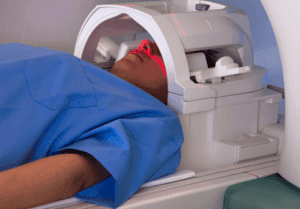There are many different marketing techniques businesses are using. These strategies all have one thing in common: they aim to get more customers and visitors. One of these techniques is neuromarketing which allows businesses to get more detailed information about their customer base.
But what is neuromarketing, and how does it work? What are the different techniques? And does neuromarketing manipulates us?
What Is Neuromarketing?
Neuromarketing uses neuroscience in marketing and advertising. It allows businesses to measure customer engagement, behavior, and decision-making process through science.
Neuroscientific data helps a company accurately assess its customer response to advertising, branding, targeting, and pricing. The data can also benefit crafting an effective marketing strategy.
Consumer neuroscience eliminates obstacles of traditional consumer research like bias. Neuromarketing uses scientific research methods like brain imaging and eye-tracking, facial experience, and heart rate to measure a customer’s engagement and emotional response.
What is the difference between Neuromarketing and Traditional Marketing?
Traditional marketing research relies on self-reported responses from test participants with bias that can influence your customer’s responses. However, neuroscience lessens the potential for these biases to impact your research and data collection. The three following main biases can influence the traditional marketing research result:
- Response bias is when the circumstances of the research setup influence a customer’s research response. This includes their reaction to the interview, the environment they are in, or the desire to be a “good” test subject.
- Self-assessment bias is undecided about their own response or emotional state within a test, which can affect the accuracy of their response. Your customer’s response to a product may not be as clear as what a brain scan or physiological response might reveal.
- Researcher bias: The researchers bring their own subjective biases into any marketing test, which can influence how they report data. Neuromarketing cuts out the influence of a potential researcher bias.
Why neuromarketing is important
While neuromarketing is controversial, it still can be important for companies. It has different techniques that help brands to understand customers’ needs and preferences and better meet them. The method can show customers’ responses to different ad types, campaigns, and product packaging.
As a result, business owners can select the best option among all available options and improve the effectiveness of campaigns and strategies. There are also even more benefits from this strategy:
- identify customers’ non-conscious responses to different ads, methods, and designs
- find new unique strategies
- understanding the audience’s needs and desires
- improve advertising strategies and campaigns
- explore the feeling and emotion that partial ads logs phrases can trigger in customers
- enhance customer experience
- increase sales
- gain competitive advantage
With neuroscience, marketers can identify product elements that receive a better customer response and increase sales.
How does neuromarketing work?
Functional magnetic resonance imaging and electroencephalogram tools are used for neuromarketing. These tools scan people’s brains and evaluate physiological and neural signals to specific ads, designs, packaging, etc. The brain responses are crucial for companies as they provide a clear picture of customers’ needs and wants.
Researchers show customers ads, product designs, or packaging and track their reactions and brain activity. After they get responses and measure changes, businesses can decide what the do next.
Brain scanning allows companies to track every brain activity such as eye movement, change of pupils, facial expression, emotions, and heart rate to get customer insights. Based on the results, companies can decide how to improve their ads and content, product design and packaging, website design, and branding. So they get the audience’s attention and resonate with customers’ needs.
Neuromarketing techniques
To successfully implement neuromarketing, you need unique tools and neuromarketing specialists. A business can use the following neuromarketing techniques.
![]() Eye-tracking gaze. It is a technique that focuses on gaze and where customers direct it. With its help, you can figure out what ads, color fonts, and designs successfully grab their attention. If you want to archive brand recognization, you can also see how fast customers recognize your brand. When you choose eye-tracking, you can improve website design and packaging and lower ad costs. While it is an easy manageable technique, it can not evaluate customers’ emotions.
Eye-tracking gaze. It is a technique that focuses on gaze and where customers direct it. With its help, you can figure out what ads, color fonts, and designs successfully grab their attention. If you want to archive brand recognization, you can also see how fast customers recognize your brand. When you choose eye-tracking, you can improve website design and packaging and lower ad costs. While it is an easy manageable technique, it can not evaluate customers’ emotions.
 Pupillometry. This method checks the pupils of test participants if the pupils are widened to assess the level of customer engagement. The results help to figure out steps to update ads, site design, and product packaging. It is a relatively cheap and easy-to-execute process.
Pupillometry. This method checks the pupils of test participants if the pupils are widened to assess the level of customer engagement. The results help to figure out steps to update ads, site design, and product packaging. It is a relatively cheap and easy-to-execute process.
 Facial coding. This technique focus on the facial expression of participants to identify emotional responses. You can figure out people’s emotions: happiness, fear, anxiety, surprise, satisfaction, etc. You will receive information to improve your ad content and resonate with the audience for a relatively low price.
Facial coding. This technique focus on the facial expression of participants to identify emotional responses. You can figure out people’s emotions: happiness, fear, anxiety, surprise, satisfaction, etc. You will receive information to improve your ad content and resonate with the audience for a relatively low price.
 Biometrics. A method to identify the engagement level and the type of responses (positive or negative) based on skin preparation, heart rate, and conductance. With Biometrics, you can change your ad content to the people’s desires. Together with eye-tracking, it can improve the ads and content you choose for them.
Biometrics. A method to identify the engagement level and the type of responses (positive or negative) based on skin preparation, heart rate, and conductance. With Biometrics, you can change your ad content to the people’s desires. Together with eye-tracking, it can improve the ads and content you choose for them.
Electroencephalogram. It helps reveal customers’ engagement and recall with electric signals that come from neurons inside the brain. This relatively expensive technique can evaluate changes in short periods and improve branding and ad quality.
 Functional magnetic resonance imaging (fMRI). It is the most expensive approach that provides a detailed emotional response, recall, and customer engagement. fMRI identifies blood flow in the brain during high neural activity. As a result, you receive data to improve branding and set prices. To perform the method, you need a lab.
Functional magnetic resonance imaging (fMRI). It is the most expensive approach that provides a detailed emotional response, recall, and customer engagement. fMRI identifies blood flow in the brain during high neural activity. As a result, you receive data to improve branding and set prices. To perform the method, you need a lab.
How to use neuromarketing for your business?
Neuromarketing is a concept that can help grow your business faster. But you need to know how to implement these methods into your strategy to be effective. The following steps can help you with this:
1. Study pattern of eye tracking.
While you might not pay much attention to eye movement and changes, they can provide insight into your business. You can identify if your customers like your advertising, product packaging, and design. With eye-tracking, you can also see the elements on your ad and in-store that drives attention.
By studying the gaze of research participants, you can determine if customers like your company’s colors, fonts, and visuals. Careful examine customers to find out whether they engaged with your ads in a store. Once you figure this out, you know what you can improve in your ads, packaging, and branding.
2. Create positive emotions.
A smile drive attention, and an image of happiness release endorphins. It makes people more interactive and open to society. Being friendly, cheerful, and open-minded enables you to be closer to your audience. It will establish trust and transparency.
When you place an image of a smiling person on your ads or post, it will shape a positive image of your brand. People will more likely buy from your company.
3. Make simple rules.
If you ask a customer to enter their credit card details to get a free trial, you are more likely to scare them away, and they might look for another service. Users that don’t need to submit card details for a trial are more likely to convert into customers. Keep this in mind and simplify the sign-up process by creating intuitive web forms and enhancing the buyer journey.
4. Implement psychological tricks.
There are many tricks to capture customers and influence their buying decisions. Most companies use specific price points to convince shoppers they save a lot. So instead of $100, the price is $99.99. Some businesses also remove the currency sign.
Neuromarketing also uses tricks like placing products with a light color on top shapes and goods with a dark color on the bottom shell. This can increase sales. It also depends on which part of the store goods are placed. The same can be done in an online store where you have different categories and highlights & recommend products on the front page.
5. Use sensory marketing.
If you appeal to customers’ senses, you can reach them and build a positive brand image. You can gain attention and gain trust. A nice smell and pleasant light can create an amazing atmosphere and ensure a great experience for customers. Scent can archive a modern and exciting smell that people will associate with your brand, which can also increase sales.
For an online shop, you need an appealing web design, high-quality images, and a brand voice suited for your audience. Have a good call to action and make it easy to check out and navigate on your website.
Does neuromarketing manipulate us?
Many people are annoyed by an ad in the middle of watching a video or something else and tell themselves that such an annoying interruption can not actually convince them to buy something they don’t want. But in the end, they still buy it.
If this didn’t work, it wouldn’t be used as long. You might already know the basic marketing stuff were commonly bought items are placed at the end of the store. So you go to as many items as possible before getting what you need.
The Buy 1 Get 1 free offer clearly boosts revenue and makes use of buying more stuff in exchange for a very small discount. But in neuromarketing, your psyche is being studied to understand patterns and predict customers’ choices before they are aware of them themselves.
 Our perception is based on stimuli that are already present. For example, if you unlock your phone in a well-lit environment and the screen light up, it is barely notable. But if you do the same in a movie theater, it gets very bright. Even though the brightness around you changed the same, your perception is vastly different.
Our perception is based on stimuli that are already present. For example, if you unlock your phone in a well-lit environment and the screen light up, it is barely notable. But if you do the same in a movie theater, it gets very bright. Even though the brightness around you changed the same, your perception is vastly different.
Similar is the price perception when a product goes up or down. How the customer feels depends on the original price. Companies use this information to marginally increase the price of a product of phase. They do so in increments just below our perception threshold.
The process is called anchoring. It makes customers more generous in how much they pay. For example, in 2007, the first iPhone came out its cost was over $499. It was a huge price, especially if you consider that people were not familiar with it. Even with today’s standard, some phones, including Iphonse, are cheaper than that.
Apple uses the demand curve to its best ability. First, set the price high as for every market, a certain percentage of people can pay even inflated product assuming they like the product. Once they had educated that demographic, they dropped the prices significantly. The iPhone 3G was sold for only $199.
At this point, enough people were owing iPhone, familiarizing themselves with the product. By dropping the price so much, Apple made it seem like they were giving the phone away at a massive discount. The initial 500 to 600 dollar price was just an anchor, making the eventual price seem like a total steal. Now apple increases prices yearly, and people still buy the newest iPhones without hesitation.
There are small tricks that companies use on a regular basis. One is to increase the font size of the product a little bit. The slight change is barely perceptible but subconical. We see it as something more attention-worthy. Another one is to offer customers better but not overwhelming choices. And some companies use the sensation of smell to their advantage.
Starbuck reportedly removed some sandwiches from its menu because they smelled too much like eggs and took away the coffee-heavy Starbucks smell customers know and love.
There is the question of whether doing these things is even ethical. There are two sides to the coin in this debate. On the one hand, you might argue that using these techniques for a better understanding of what customers want gives them a better shopping experience.
On the other hand, this opens up attention sabotage, which is frequently happening on social media platforms. We certainly have far less control over purchasing decisions than we thought.
You might buy things you don’t need to impress people you don’t like, and the things you own end up owning you.